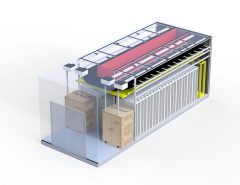AgileNet
Elevator Pitch: AgileNet transforms the way businesses perform machine learning across distributed datasets. By employing our innovative FediAC algorithm, we ensure fast, efficient, and privacy-preserving model training. Say goodbye to exorbitant communication costs and hello to streamlined, secure learning with AgileNet—where data privacy and efficiency coexist.
Concept
Leveraging federated learning and in-network aggregation for efficient and secure distributed machine learning.
Objective
To provide a platform that allows for efficient, secure, and privacy-preserving machine learning computations across distributed networks.
Solution
Using the Federated Learning in-network Aggregation with Compression (FediAC) algorithm, AgileNet facilitates fast and memory-efficient model training by compressing data during client voting and model aggregation phases, significantly reducing communication traffic and memory usage.
Revenue Model
Subscription service for businesses requiring distributed learning capabilities, with tiered pricing based on usage; premium consulting services for customization and integration.
Target Market
Tech companies, healthcare institutions, financial services, and other sectors interested in leveraging distributed machine learning while ensuring data privacy.
Expansion Plan
Start with tech companies and expand into healthcare and finance sectors; develop partnerships for broader network capabilities; continuously innovate for processing efficiency.
Potential Challenges
Scalability with increasing clients and data volume; maintaining security and privacy standards; ensuring latency reduction.
Customer Problem
Businesses need to train machine learning models on distributed datasets while preserving data privacy and optimizing communication efficiency.
Regulatory and Ethical Issues
Comply with global data protection regulations (GDPR, CCPA); ensure ethical use of data and algorithms without bias.
Disruptiveness
Revolutionizes distributed learning by significantly reducing communication overhead and memory requirements without compromising model accuracy.
Check out our related research summary: here.



Leave a Reply